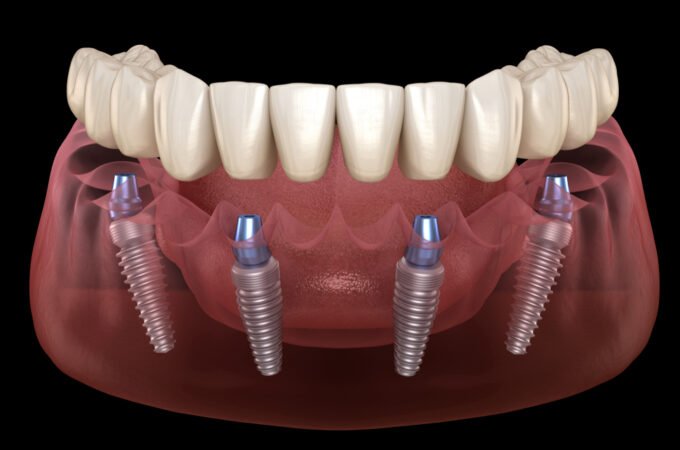
6 Common Dental Procedures You Should Understand Better and Why
Did you know that only 64 percent of adults visited the dentist for a checkup in the last year? If you fall into the 36 percent that haven’t visited a dentist, you should schedule an appointment soon.
Going to the dentist helps you avoid problems; however, you may still need work on your teeth even if you go to the dentist regularly.
Learning more about the most common dental procedures can help you understand why you need work and the options you can choose.
So, if you’re ready to learn about the most common dental procedures, continue reading to find out more about the top six procedures that dentists perform.
1. Cavity Removal and Fillings
One of the most popular general dentistry procedures is cavity removal and fillings. A cavity is decay on a tooth, and decay destroys teeth. The only way to treat a cavity is by removing it.
After the dentist removes a cavity, there is a hole in the tooth. You cannot leave a tooth in this condition, so a dentist fills the hole with a filling. Fillings come in several types, but most dentists today use tooth-colored fillings.

Getting a cavity removed and a filling in a tooth takes about 30 minutes in most cases, and the costs vary. If your dentist tells you that you have a cavity, you should follow through by completing this procedure.
2. Tooth Extractions
Another standard dental procedure is a tooth extraction. Tooth extraction is another word for tooth removal. Getting a tooth removed from your mouth is something that you may need for several reasons.
One reason is to alleviate overcrowding. If your mouth cannot hold all your teeth, the dentist can remove some to provide more room for your other teeth.
When a tooth is damaged severely by trauma or decay, the dentist may also suggest removing it. Dentists often remove wisdom teeth, too, and this is primarily because you don’t need these teeth. Wisdom teeth often cause more harm than good.
3. Bonding Services
Bonding services are also common dental procedures. Bonding is a material that dentists use for cavity fillings, but they also use this material for other purposes.
Dentists can use bonding on teeth to fill in gaps. Suppose you have a gap between your two front teeth that you don’t like.
You can go to a dentist to have this fixed with bonding.
Bonding is also ideal for covering teeth to whiten them or to strengthen them. Adding a thin layer of bonding on your teeth can help if you suffer from extreme tooth sensitivity.
Dentists use bonding for many reasons and purposes, and it may be the most versatile material and service that dentists use.
4. Dental Crowns
Getting a dental crown is also quite common. A dental crown is an artificial tooth that fits snugly over an existing tooth.
Adding a dental crown to an existing tooth strengthens and protects a tooth.
Dental crowns also improve the appearance and functions of teeth.

You might need a dental crown if you have a cavity that is too large for a routine filling. If decay consumed a large percentage of your tooth, there might not be a lot of tooth structure left after the dentist removes the decay.
In this example, the dentist could save the tooth by placing a crown on it after removing the decay. This crown would work as a regular tooth and would look natural. The best part is that you could save the tooth instead of having it removed.
5. Root Canals
Most people do not like to hear the term “root canal” when visiting a dentist. Root canals may not be fun to go through, but they save teeth and are extremely common.
A root canal is a procedure you may need if the roots of a tooth become infected. The roots carry nerves and oxygen to your teeth, and they keep your teeth strong and healthy.
If bacteria gets into a tooth, it will eventually reach the roots of the tooth. You will end up with an infection in the roots when this occurs. If you want to save the infected tooth, a root canal might be your only option.
When people face root canal procedures, they often ask their dentists if extraction is a good alternative. When you compare a root canal vs extraction, you should consider several things:
- Do you want to save the tooth?
- Will you mind living with a gap in your mouth?
- Are you willing to pay for a tooth replacement?
- What are the total cost differences between these options?
You can discuss these options with your dentist if you are in this position. By talking about your options, you can learn more about them and make an informed decision.
6. Dental Implants and Bridges
The last common dental procedure to understand is tooth replacement procedures. Dental implants and bridges are the two most common options in tooth replacement.
A bridge requires using other teeth in your mouth to hold the tooth replacement in place. An implant is a stand-alone tooth that does not affect other teeth.
If you need to replace a tooth, you can talk to your dentist about these options. Your dentist can help you understand the differences and the pros and cons of each choice. You can also learn about the costs of each option.
How to Get More Information on Common Dental Procedures
You can make informed decisions about the dental work you need to understand the procedures and the alternative treatment options.

If you haven’t visited a dentist recently, you may want to consider going. You can prepare for your visit by learning more about common dental procedures, and you can do this by checking out our blog.




